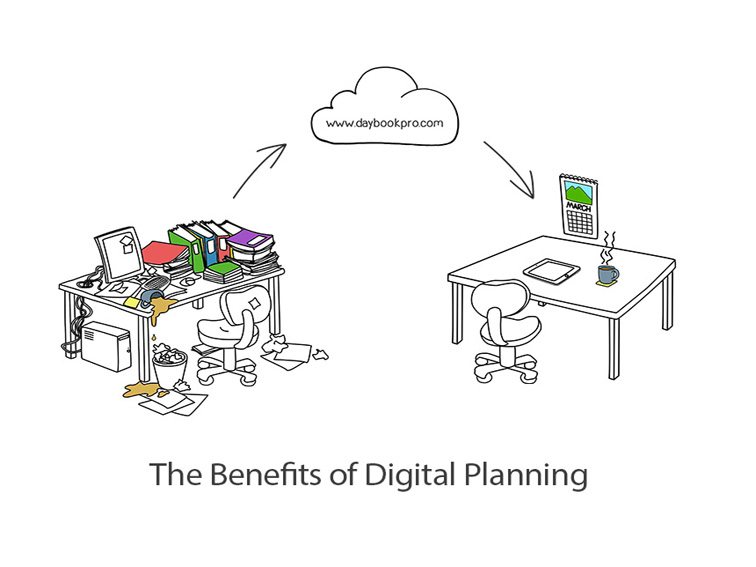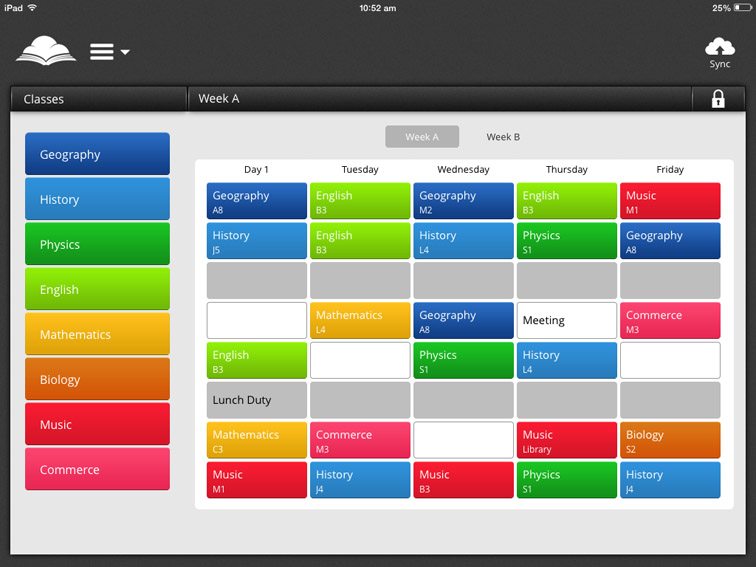What Are The Benefits Of Digital Planning For Teachers?
by Peter Hubbard, Daybookpro.com
Planning engaging learning experiences for students, enabling them to meet or demonstrate specific standards or objectives, still remains the main part of the job of a teacher.
All over the state, nation and globe, teachers spend countless hours planning content to achieve a common outcome. Sure, faculties and perhaps districts may have means of sharing this workload, but generally it’s that hour or six on the weekend, or the night before where the hard work truly gets done.
With our connected society, the opportunity for educators everywhere to share content is staggering. Done properly with the right technology, lightening the planning load through collaboration should not only result in the best quality content being delivered to more students, but also enable teachers to focus on the ever important demands of classroom management and student-teacher relationship.
The future of teaching surely needs to involve a community-based approach to content creation. Consider the potential of organizing and pooling our best content onto a common, yet customizable platform.
A digital community where an entire Unit – loaded with engaging activities and resources for a given subject, in a given curriculum region – can be downloaded from a library of thousands of Units, contributed by users. This is the vision of Cloud School Ltd. It’s early days but we are on a mission to build the tools to facilitate such a community.
As well as the potential for collaboration, there are also more immediate benefits that come with the right digital planning solution.
10 Benefits Of Digital Planning Tools For Teachers
1. If the tool works, it should save you time
Let’s face it, if it isn’t saving you time, then it’s not really a solution. By definition, a quality tool should enable the user to do a better job with less effort.
2. It can solve your paperwork/paper trail needs
Having a paper trail documenting your lesson content (and the links to state and national standards) can be time consuming. A good system should take care of your record keeping requirements for you by publishing detailed documentation of your teaching whenever required.
3. It can support the macro-framing of content
A modern planning system should be content-centered, not simply a diary of daily lessons.
Ideally, the lesson content should be contained in Topics or Units, something broader than individual lesson plans. This Unit can then belong to a certain curriculum area and address a particular scope of objectives. It can be shared/traded among users, added to and improved upon over time and stored for re-teaching in the future.
4. You can kill two birds with one stone
A true planning solution will be a daily lesson planning platform and a record keeping/paper trail system. No double handling of work and certainly no additional word-processing.
5. The process of planning is more engaging and accessible
The right system should allow for rich, dynamic, customized planning.
Using lists to quickly link to standards and regular, repeated information. Adding resources to support activities (files, websites, multimedia) allowing you to present/email/print these directly from your device. Add activity ideas to your units while sitting on the train or while being inspired at a conference.
6. Be useful on the ground in the classroom
Teaching is organic and so your planning must also be. Often the best lessons just ‘happen’. Add a great lesson idea to a Unit as it’s unfolding in the classroom.
With the more well-designed digital planning tools, you can present content straight from your iPad. You can also capture images, audio or video of student work samples and add these as evidence of learning or quality work samples for future classes.
7. Enable you to track standards quickly and intuitively
Many digital planning tools can provide you with a custom, multiple list environment; lists can contain any type of information, not simply state standards.
List items are then ticked, to link them with a particular activity. Build custom lists of information you or your faculty/school wish to track. Once a list is created, it can be copied into any Unit.
8. Cloud = Access
A good system should organise and store (back-up) your teaching life in the Cloud where you can access it anytime. If your device is lost or stolen, that shouldn’t be a problem.
9. Customization is simple
Planning formats differ from one teacher, content area, grade level, or school to the next. The right solution needs to cater to individual needs by allowing flexibility in the way that content is created. No rigid templates or text field headings that can’t be renamed.
10. Natural sharing of resource-rich content
Share the workload with your colleagues by sending entire Units, including all resources – to other users.
One Solution
While there are a lot of options out there for teachers–many very good–the solution we have created is Daybook Pro.
Daybook Pro is a Cloud based subscription service with a flat fee of $1 monthly or $10 annually but it’s free to trial for 60 days. An account can be created by downloading Daybook Pro from the AppStore onto your iPad. You then have access to your teaching life via the iPad app or the Web App.
You can find us in the iTunes store here.
We Want To Hear From You
Note that rather than simply peddling product, we’re interested in feedback and interaction with the teaching and learning community, which is why we came to TeachThought to discuss the process of digital planning. In the comments section below, we’d love to hear your thoughts on Daybook Pro–what you like, what you’d love to see more of, and any other questions or comments you might have.
The more we know about you and how you use digital planning tools, the better we can help.
10 Benefits Of Digital Planning Tools For Teachers



